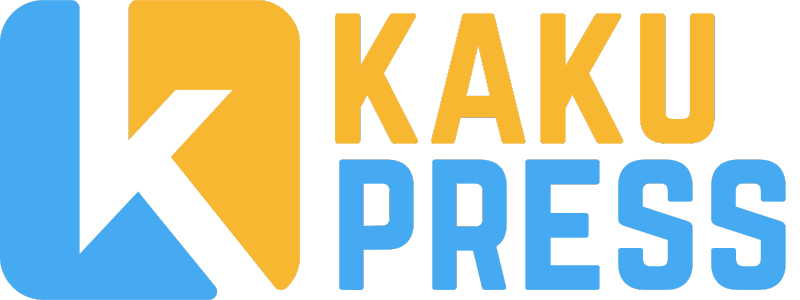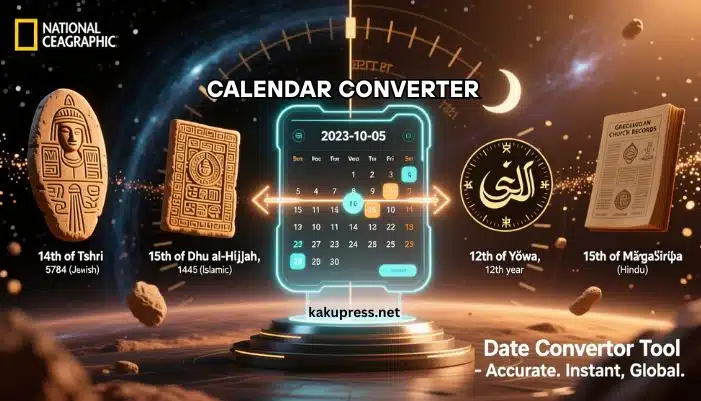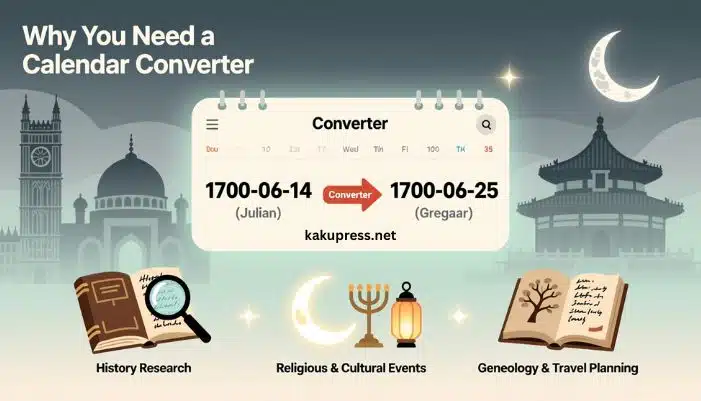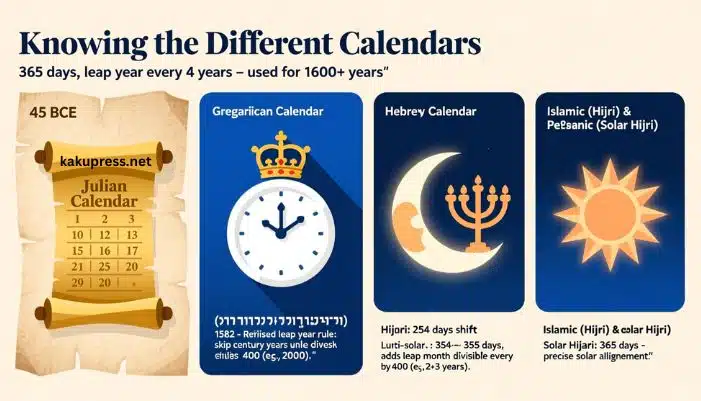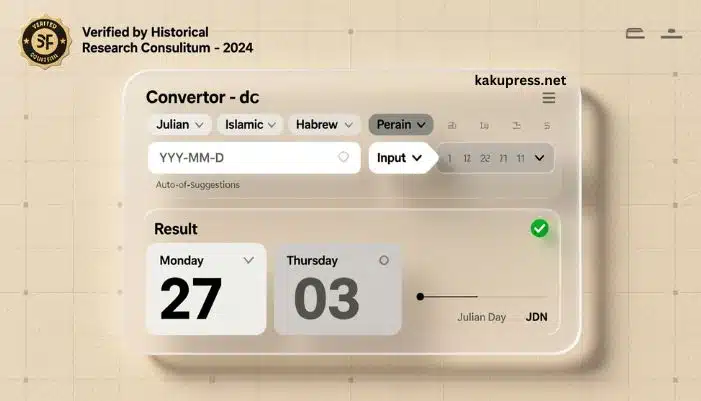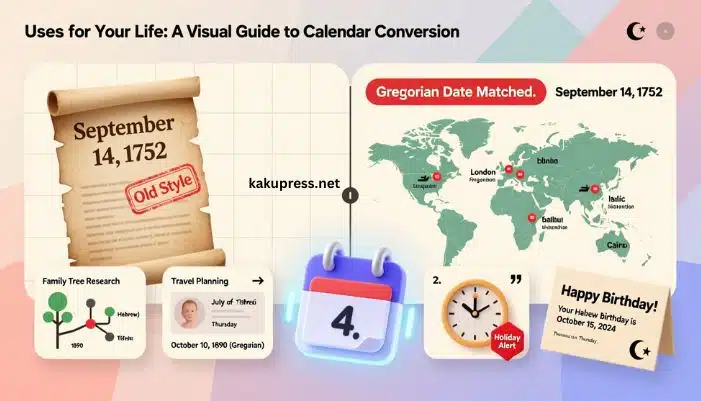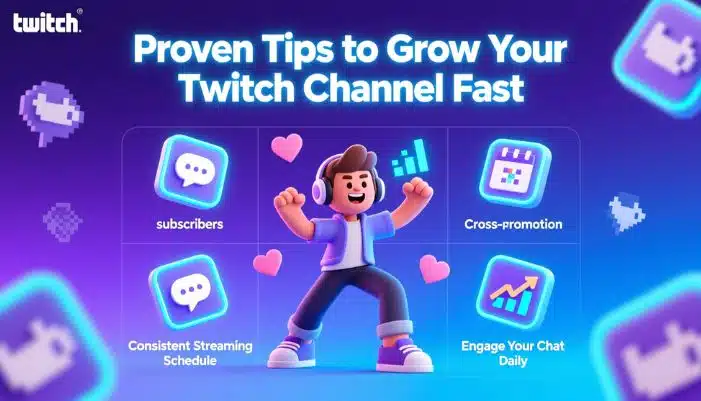Do you ever look at a date and realize it is not the kind of date you usually see? Maybe you are reading an old history book, planning a trip, or trying to find a date from long ago. The simple truth is that people all over the world do not use the same calendar. We use different systems for keeping track of time. This difference makes changing dates a real problem.
This is why a calendar converter is a tool you need. A converter is not just a fancy gadget. It is a helpful tool that lets you change a date from one calendar system to another. It does this right away and makes sure the date is correct. You do not have to struggle with math or confusing tables anymore.
We will look at why you need a converter and how these tools work. You will learn how to use a good converter to make your history work easier, help you with world travel plans, and stop you from worrying about time differences.
Why You Need a Calendar Converter
Most of the world today uses the Gregorian calendar. It is the main standard. But the Gregorian calendar is quite new when you look at all of history. Many cultures and religions use other, very old calendars. These older calendars are still important for their daily lives and special events.
Think about these common times when you really need a calendar converter:
-
Looking at History: You are reading about something that happened in England in the 1700s. People there were using the Julian calendar back then. If you want to know what day that is today on the Gregorian calendar, you must change the date. If you skip this change, your timeline will be wrong.
-
Cultural and Religious Events: Many important holidays and religious days are set by specific calendars that are not Gregorian. For example, dates for holidays like Ramadan, Passover, or the Lunar New Year change every year on the Gregorian calendar. A converter helps you quickly find the exact Gregorian date for these important times.
-
World Planning and Family History: If you are finding out about your family history or looking at old records from countries that used a different system, you must change those dates to understand what you find. When you plan a trip or business meeting in a place with a non Gregorian calendar, you need the right date for your plans.
A converter gets rid of all the guessing. It moves you from a state of confusion to being completely sure.
Knowing the Different Calendars
To like a good converter, you should know the basics of the most common calendar systems it works with. They all have different rules for leap years, different starting points, and different numbers of days in a year.
The Julian Calendar
The Roman emperor Julius Caesar started the Julian calendar in 45 BCE. It was a great change from the old Roman system. The Julian calendar has 365 days a year. It adds a leap year every four years. It was the main calendar across Europe and its colonies for more than 1600 years.
But the Julian year is just a little too long. It gained about one extra day every 128 years compared to the solar year. By the 1500s, this small mistake caused the date of the spring equinox to move too much.
The Gregorian Calendar
Pope Gregory XIII started the Gregorian calendar in 1582. He did this to fix the mistake in the Julian calendar. The main difference is the rule for leap years. The Gregorian calendar keeps the standard every four years rule, but it adds one key change: it skips the leap year in years that end in 00 (like 1700 or 1800), unless that year can be divided by 400 (like 2000).
This small change makes the Gregorian calendar much more correct. It is now the calendar that most people in the world use for everyday life.
Other Main Calendars
Many other calendars are still used, especially for culture or religion. A good converter can handle many of these, such as:
-
Hebrew Calendar: This calendar uses both the moon and the sun. It controls Jewish holidays and prayers. It is complex because it uses the moon’s phases and the solar year.
-
Islamic Calendar (Hijri): This is a calendar based only on the moon. A year is about 11 days shorter than the solar year. This means the dates move constantly when compared to the Gregorian calendar.
-
Indian National Calendar (Saka Samvat): People use this calendar along with the Gregorian calendar in India for official work.
-
Persian Calendar (Solar Hijri): This is a very correct calendar based on the sun. People mostly use it in Iran and Afghanistan.
When you use a converter, the tool does all the hard math needed to bridge the gap between these very different systems.
How a Calendar Converter Works: A Simple Look
Do not worry. You do not need to know about space math to use a converter. But knowing the simple steps makes the process clear.
A calendar converter uses a basic math rule that connects all the calendars it knows to one single, steady point in time. This point is often called the Julian Day Number (JDN).
-
The Julian Day Number (JDN): The JDN is a steady count of days since a certain start date: noon on January 1, 4713 BCE, on the Julian calendar. This old starting point creates a universal date reference. Every single day that has ever happened has a unique JDN.
-
Input to JDN: When you put a date into your starting calendar (for example, Julian or Hebrew), the converter’s math rule first changes that date into its unique JDN. It uses all the complex rules of the starting calendar, including its specific leap year rules and its start year.
-
JDN to Output: Once the tool has the JDN, it can then change that number into any other calendar you want. The converter uses the rules of the target calendar (Gregorian, Islamic, and so on) to figure out what month, day, and year matches that JDN.
Think of the JDN as a special translator. It takes a date in one language and turns it into a date in another language, with no mistakes.
For you, the person using the tool, this whole process is hidden. You pick your first calendar, put in the date, pick your second calendar, and the date changes right away.
Picking the Right Calendar Converter Tool
Not all calendar converters are the same. Since you need these tools to be correct, you must pick one that is reliable and easy to use.
Here are the things you should look for in a great calendar converter:
-
Many Calendars: The best converters do more than just Julian to Gregorian. They should include the major religious and history calendars like Islamic, Hebrew, and Persian.
-
Clear and Easy: The screen you use should be simple. You should be able to pick the input and output calendars and put in the date without a lot of confusing choices. Simple use is most important.
-
Shows Details: A good converter will often show the day of the week for both the first and the new date. Some even show the JDN, which is helpful if you are doing deep research.
-
Works Everywhere: Pick a tool that works well on your computer and your phone. You need to change dates whether you are at home or traveling.
-
Trustworthy: Use converters that come from schools, history groups, or very well known technical websites. Do not use tools that are unknown or do not have good information. Your dates must be correct, so you need a trusted source.
You should always check the converter with a few dates you already know when you first use a new tool. Make sure it gives you the answers you expect.
Real Uses for Your Life
Using a calendar converter gives you real, useful benefits. It saves you time and stops you from making mistakes.
School Work and Family Tree Research
If you study history, you know how important exact dates are. Before the time of the “switch over” in the 1700s, dates in different countries were often different. England started using the Gregorian calendar much later than most of Europe. An event written down as September 14, 1752, in London is not the same day as September 14, 1752, in Paris. A converter handles this problem for you.
When you work on your family tree, you might find dates in a birth record that use an old system. You can easily put that date into the converter and find the correct Gregorian date. This helps you keep your family records correct and easy to share with others.
Planning and Travel
For people who travel the world or work in business, the converter is a great helper. You need to know the dates of local public holidays. If you are setting a meeting around a holiday that uses the Islamic calendar, a quick change ensures you do not set an important meeting on a day when everyone is off work.
Just Knowing More
Outside of work and travel, a calendar converter simply helps you learn. You can look up the date of a historical event and know exactly what day it was. If you know your friend’s birthday on the Hebrew calendar, you can use the converter to find the exact Gregorian date for their next birthday.
Read: CBE Mobile Banking: Your Full Guide to Ethiopia’s Top Financial App
Conclusion
You should not let different dating systems slow you down. The job of a calendar converter is to make your life simpler. You do not need to be a space scientist or a history expert to use one well.
Now you understand what a calendar converter does and why it is so necessary. You know to look for correctness, support for many calendars, and an easy screen. Add a reliable converter to your tools for research and planning. You will find your work becomes much smoother and more correct right away. Stop counting days and start changing them.
Frequently Asked Questions (FAQs)
What is the main difference between the Julian and Gregorian calendars?
The main difference is the rule for the leap year. Both calendars have a leap year every four years. The Gregorian calendar adds the rule that a century year is not a leap year unless you can divide it by 400. For example, the year 1900 was a leap year in the Julian system but not in the Gregorian system. This change makes the Gregorian calendar much more correct over hundreds of years.
Does a calendar converter fix time zone differences too?
No, a normal calendar converter only handles the change between two date systems. It changes the year, month, and day. Time zone differences are a different math problem. If you are changing a history date, you usually assume the date is local to where the event happened. If you need to plan a future event, you must add a separate time zone change after the date conversion.
How correct are calendar converters?
The best calendar converters are very correct. They use fixed, proven math rules like the Julian Day Number to connect different calendars. If you use a trustworthy tool that uses these rules the right way, you can trust the answers. Always make sure the tool clearly tells you which calendars it can handle.
What is the most common date change people use a converter for?
The most common change is for history work involving the Julian to Gregorian calendar switch. People often need to know the true Gregorian date for old events that happened in Europe or the American colonies before they started using the Gregorian calendar in the 1700s.
Can a calendar converter help me with religious holidays?
Yes. Many big religious holidays are based on calendars that are not Gregorian, such as the Islamic or Hebrew calendars. A converter can take the religious date for a holiday and quickly give you the matching Gregorian date for any year you need. This is a very common reason people use the tool for planning and celebrating.
